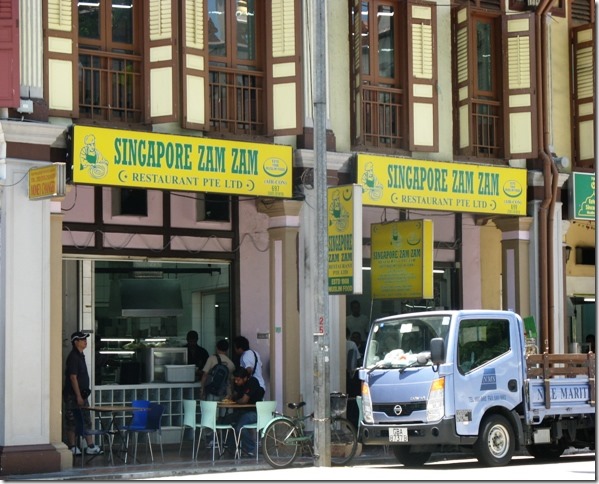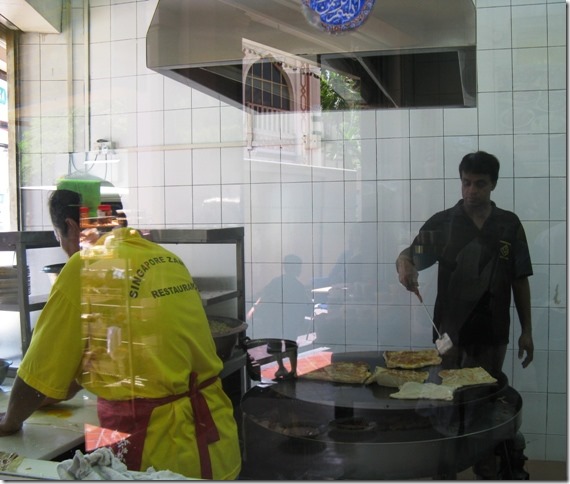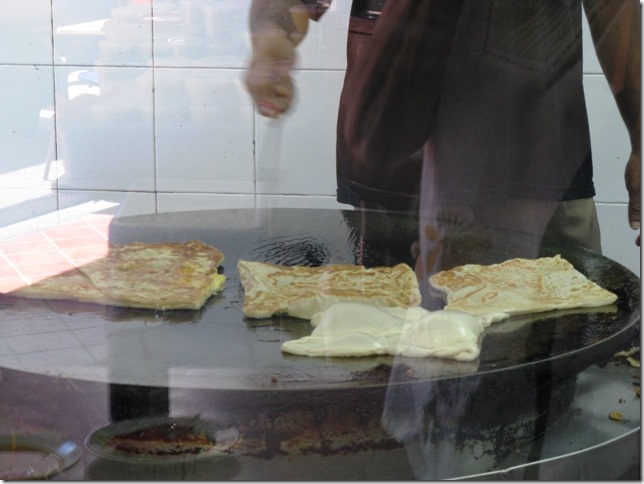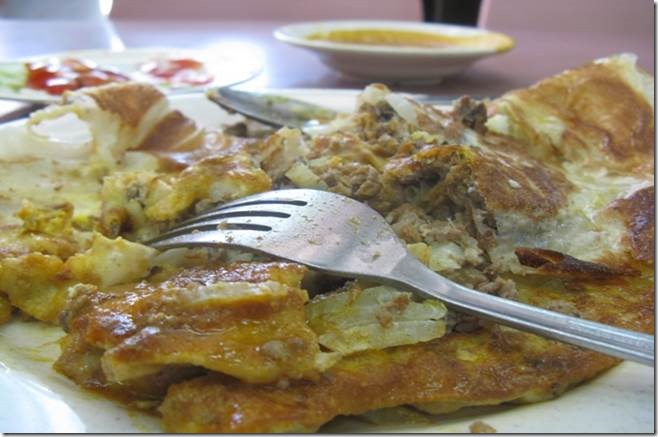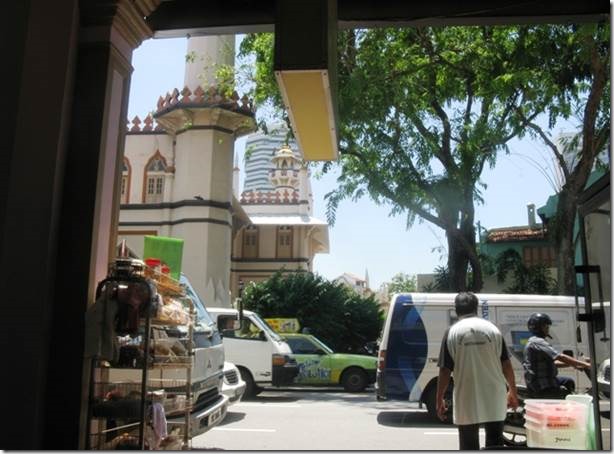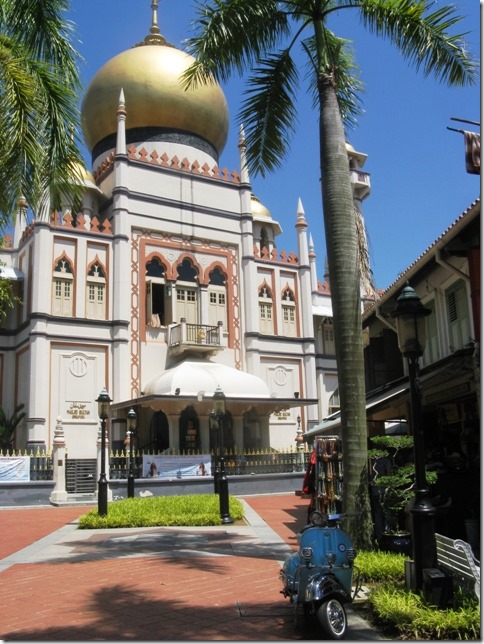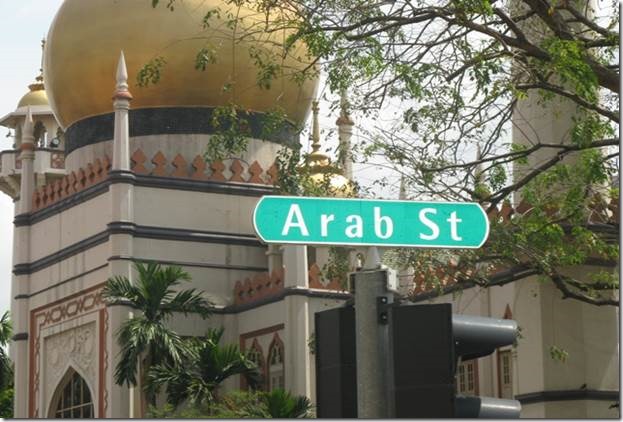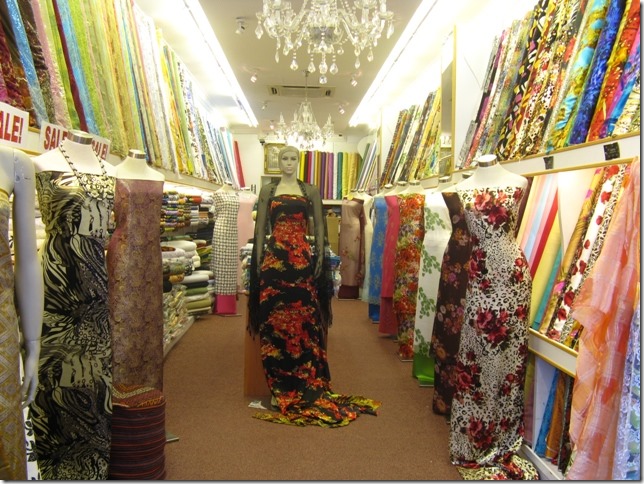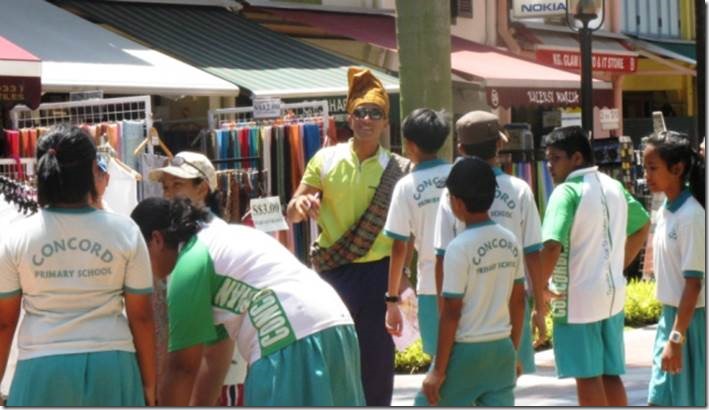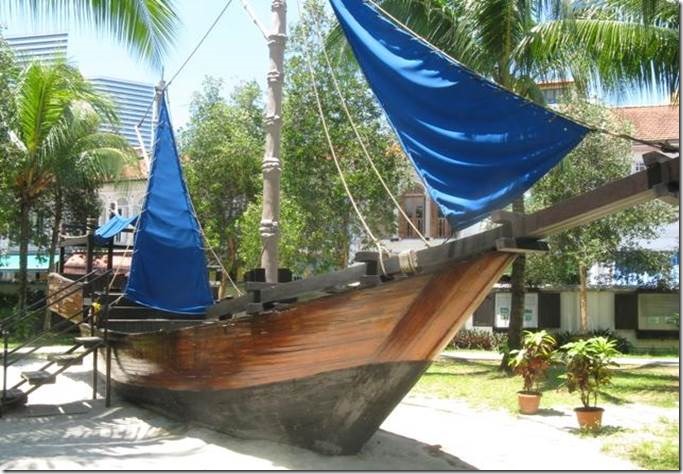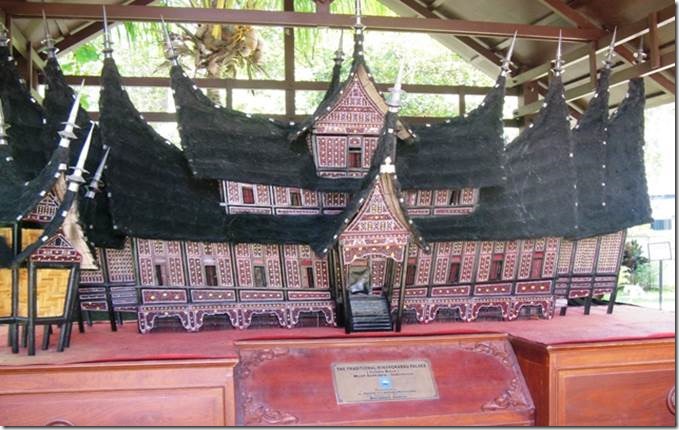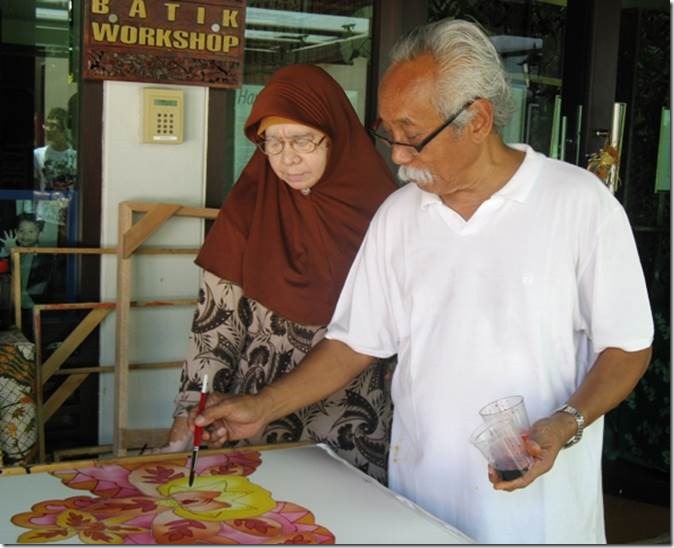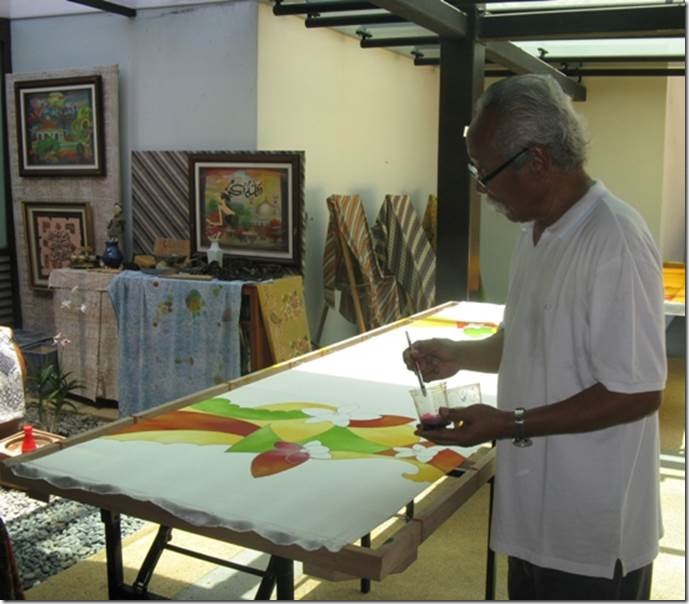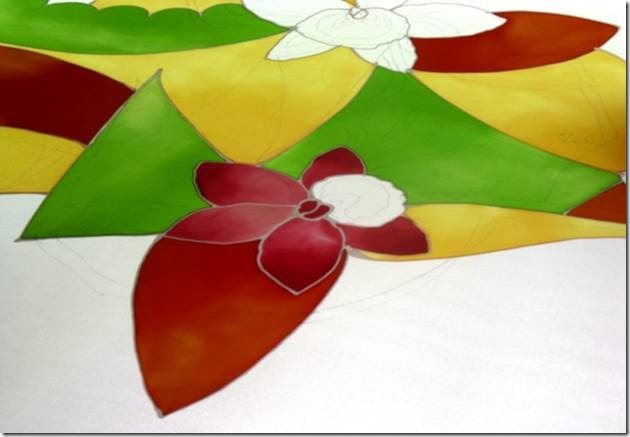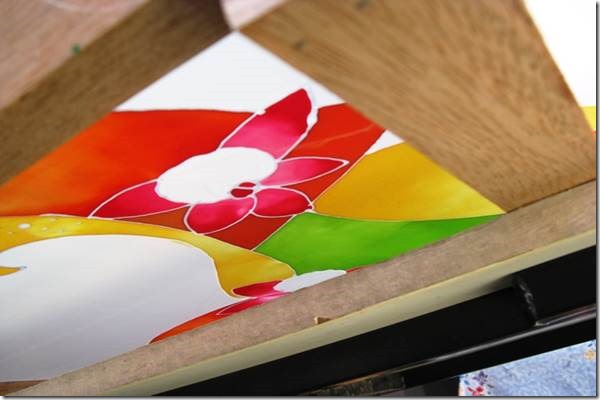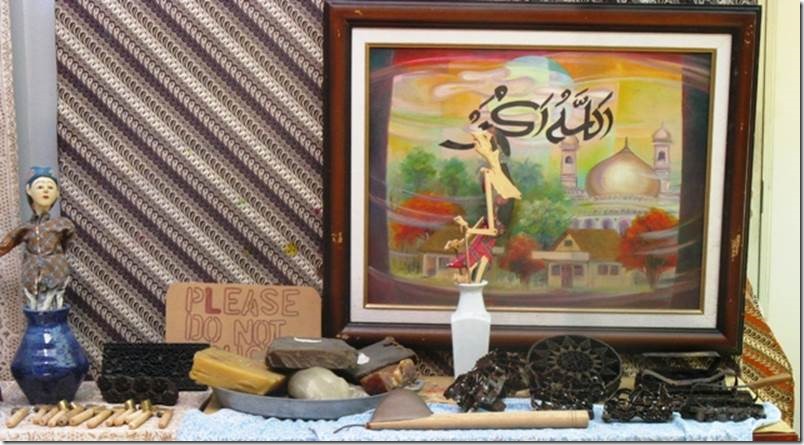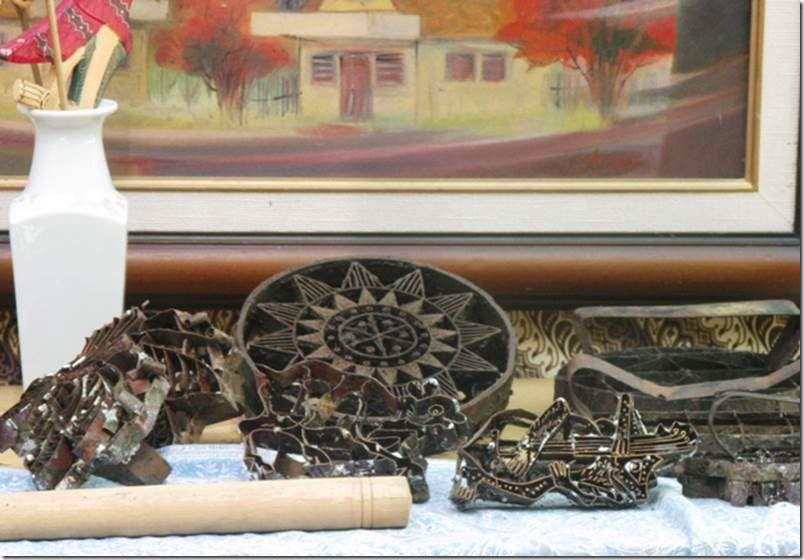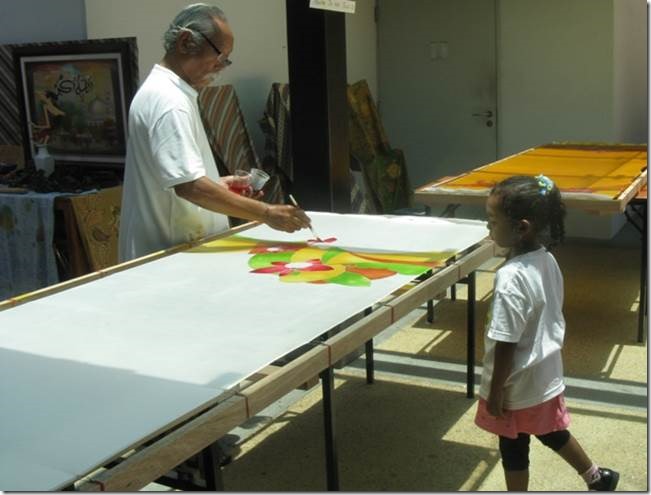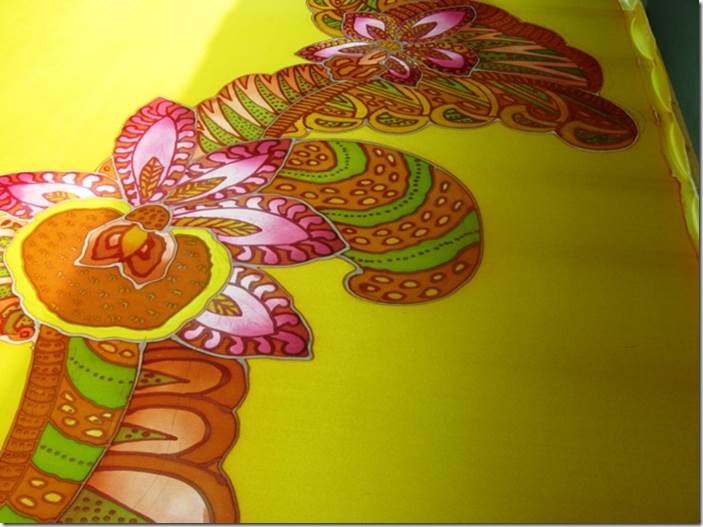I was still trying to do EVERYTHING before we left. Not possible. But I did want to learn a little more about the Malay culture so it was off to the Malay Heritage Centre. www.malayheritage.org.sg The Centre turned out to be just one street away from Arab Street where I had been twice before; once with Lang and once with Randal. I ate lunch in the same place all three times.
Singapore Zam Zam on North Bridge Rd. Halal Muslim food.
I sat at a table on the other side of the glass window. These two men are making roti. I had the lamb roti for the third time. You can see the window of the mosque across the street reflected in the glass.
Gigantic roti cooked on a huge round griddle.
I could only eat about one third of this monster roti. It was hot and filled with ground lamb and very good. They also served me cucumber with catsup and spicy dipping sauce. I washed it down with a can of Coke Zero. Total cost 4 Sing $ about $2.60 US.
I had a front row seat too, to watch the sidewalk show go by. I also watched as one of the Zam Zam workers called to passers-by to come in for lunch. Many did just that. You can see him standing there in the long white shirt waiting to nab folks as they walk by. That’s why I ate here the first time; they come out and welcome you in. I was with Lang. When Randal and I were there it was a Sunday and the place was packed with families during lunch time. We had just spent all morning, from 7:30 am until 12:30 pm visiting Singapore Immigration (very frustrating interaction with them each time we had to renew our VISA) and then making a bus trip to Johor Bahru, Malaysia and back in the game called “get more days on your VISA to remain in Singapore.” Long story. Mostly happy ending. Anyway we were starving when we got to Zam Zam which was a few blocks from the Singapore bus terminal. We had 1 lamb roti, one order of fried rice and 3 Coke Zero between us. Because the restaurant in Halal they don’t serve beer which probably would taste wonderful with a lamb roti. We were Very full.
“Masjid Sultan at Muscat Street in Kampong Glam begun in 1924 and completed in 1928. This area of Singapore was reserved for the Malay and other Muslim people by Sir Stamford Raffles the “founder” of Singapore. I just love the term Glam. The area’s name is derived from two Malay words, Kampong, meaning “village” or “settlement”, and Glam (or Gelam) referring to a variety of eucalyptus.” from Wikipedia. My photo.
Arab Street where you can buy bolts of cloth and Persian Rugs. Randal and I saw some beautiful rugs and hope to actually buy some when we get to Turkey one day.
Cloth for traditional Muslim dress.
School kids and their teacher were also visiting the area.
A Malay sailing vessel at the Heritage Centre. And I can get scared on DoraMac. Imagine crossing the ocean in this.
Traditional Minangkabau Palace. West Sumatra Indonesia. The Malays have ties to Indonesia though I still don’t truly understand much about who they really are. Looks like something from “The King and I.”
Next email, inside the museum and batik painting.

